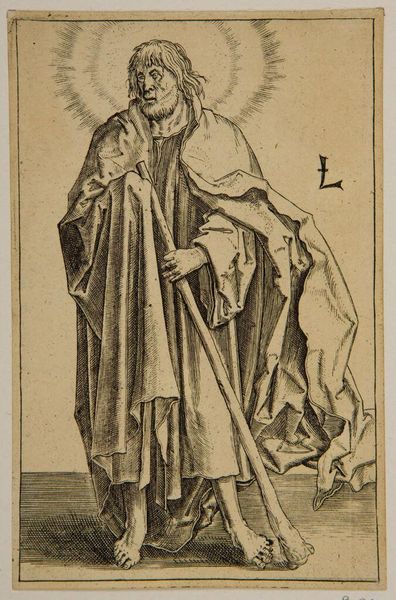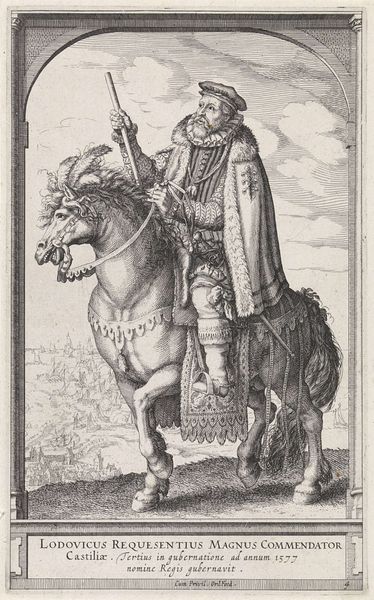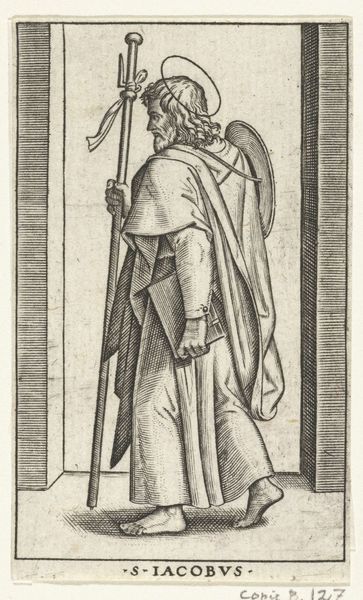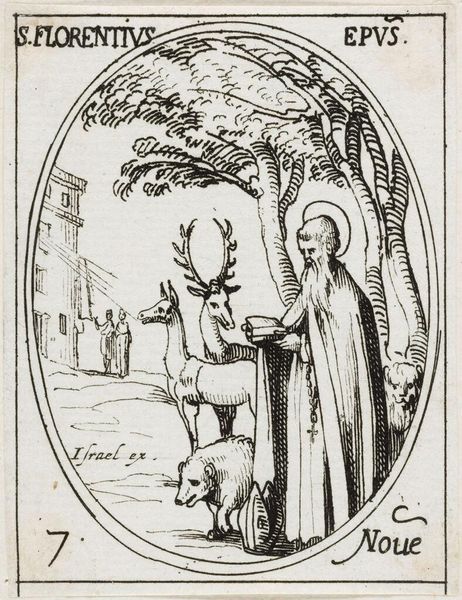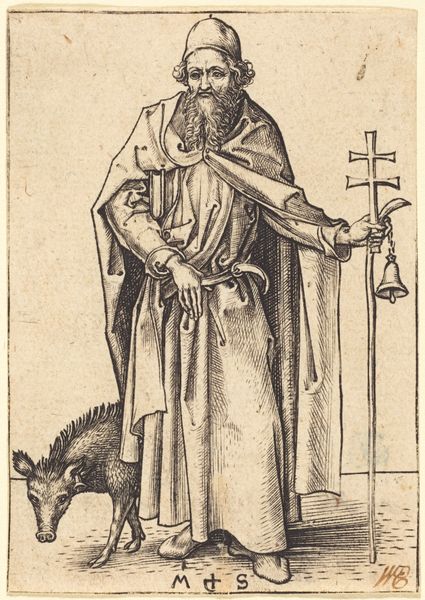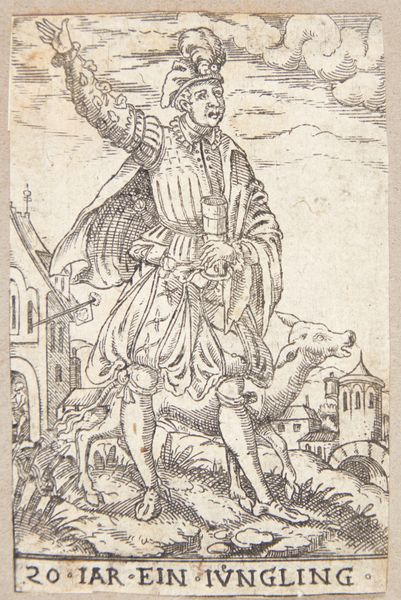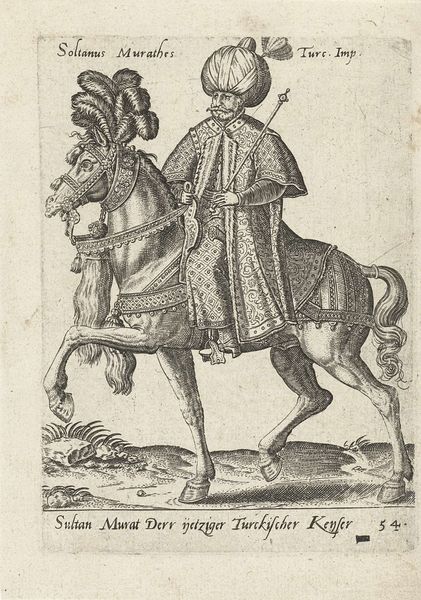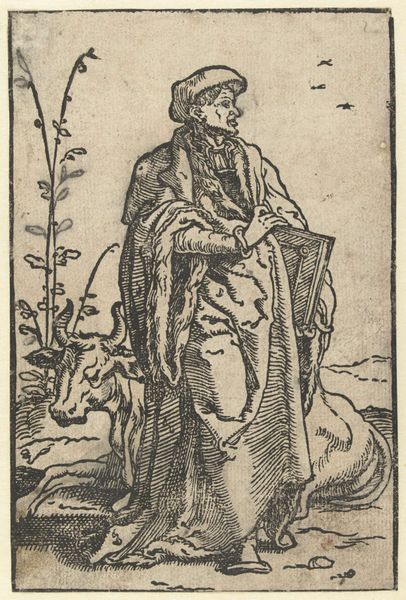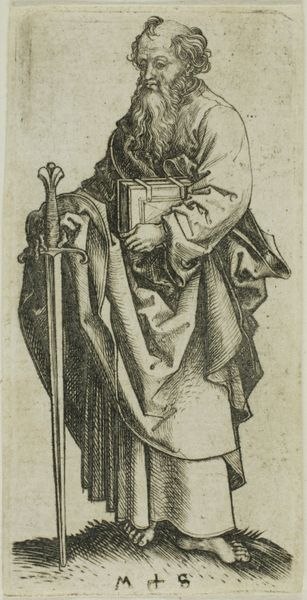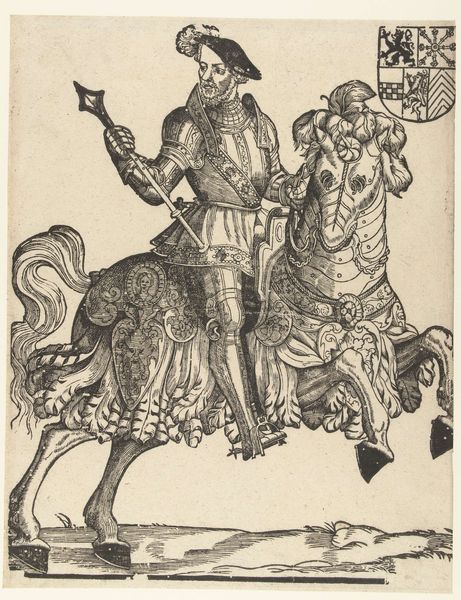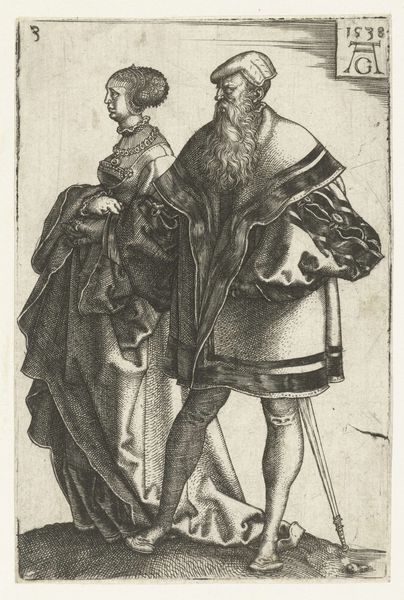
drawing, print, ink, engraving
#
drawing
#
medieval
#
allegory
# print
#
old engraving style
#
landscape
#
ink
#
pen-ink sketch
#
engraving
Dimensions: height 165 mm, width 97 mm
Copyright: Rijks Museum: Open Domain
Editor: This is "Turkse heremiet," or "Turkish Hermit," from 1576, made with engraving in ink. It gives me such an unsettling feeling... it's bizarre to see the hybrid figure—part human, part animal. What symbols stand out to you? Curator: Well, that very hybridity is ripe with symbolism. It begs the question: where does humanity end and the bestial begin? The figure carries both a eucharistic chalice, and what looks like a domesticated deer, complete with a bell. What contrasts do you notice between them? Editor: One represents faith, perhaps? And the deer... earthly companionship, even servitude? The text mentions "living a solitary life among beasts." But why a "Turkish" hermit? Curator: Ah, that's key. Consider 16th-century Europe's view of the Ottoman Empire – often a figure of both fear and fascination. "Turkish" becomes shorthand for "the Other." So, this hermit, living between worlds—civilized and wild, Christian and… something else—embodies anxieties about cultural and religious boundaries. What’s interesting is, this symbolism builds on existing cultural memory—think of earlier images of wild men, or "the Green Man.” Does it change how you interpret the hermit's solitude? Editor: Definitely. It’s not just about personal isolation; it's about being caught between conflicting identities, maybe even a fear of the unknown. Curator: Exactly! The image cleverly exploits pre-existing symbols and fears to communicate a deeper, more complex message. Editor: It’s fascinating how much cultural baggage an image can carry! I see it so differently now. Curator: Indeed. By examining these visual shorthands, we gain insight into a culture’s hidden beliefs and biases.
Comments
No comments
Be the first to comment and join the conversation on the ultimate creative platform.
